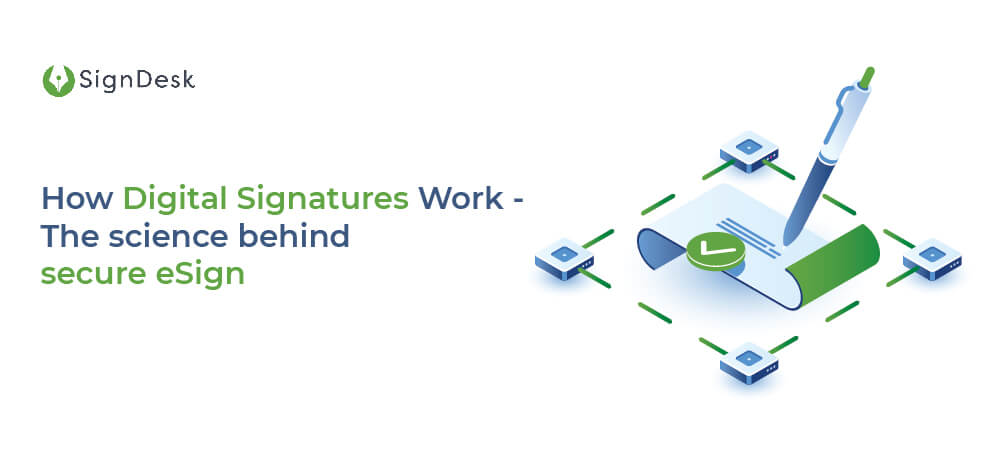Digital signatures have transcended the rudimentary function of merely providing authentication for electronic documents. Instead, they operate as a profound mechanism that ensures integrity, authenticity, and non-repudiation in the digital realm. By delving into their intricate workings, readers can gain a clearer understanding of how these signatures serve as a backbone of trust in an increasingly digital world.
At its core, the digital signature process utilizes algorithms to create a unique fingerprint, or hash, of the data within a document. This hash functions as a condensed representation of the document’s entirety, where even a minor alteration in the original content results in a drastically different hash value. The process of hashing is foundational because it maintains the integrity of the document—if the hash matches upon verification, the content is unchanged; conversely, a mismatch signifies tampering.
Digital signatures employ asymmetric cryptography, also known as public key cryptography. This intriguing method involves a pair of keys: a private key, which remains confidential to the signer, and a public key, which can be distributed widely. The digital signature is created by encrypting the hash of the document with the sender’s private key. This ensures that the signature can be decrypted only with the corresponding public key, enabling recipients to verify the authenticity of the message.
To further elaborate, when a sender digitally signs a document, they run the document through a cryptographic hash function, resulting in a unique hash value. The next step involves encrypting this hash using the sender’s private key. When the recipient receives the document, they decrypt the digital signature using the sender’s public key, which provides the original hash value. Simultaneously, the recipient generates their own hash of the received document. If both hash values coincide, authenticity is confirmed, providing assurance that the document has not been compromised during transmission.
An illustrious example of digital signatures in action can be witnessed in secure email communication. Through the use of asymmetric cryptography and corresponding digital signatures, senders can ensure their intended recipients can not only verify their identity but also ascertain that no alterations have been made to the content of the email. This mechanism is indispensable in protecting sensitive information, thereby reinforcing confidence in electronic communications.
Numerous digital signature standards exist, each catering to varied applications and jurisdictions. Among them, the Digital Signature Standard (DSS) and the Public Key Infrastructure (PKI) are paramount. DSS employs a series of mathematical algorithms to generate and verify digital signatures, while PKI provides a framework of policies, hardware, and software that establish a secure method of managing digital certificates. This infrastructure supports the entire lifecycle of a digital signature—from creation to validation and eventual revocation, if necessary.
Furthermore, the realm of digital signatures encompasses various authentication methods, which significantly enhance their security and usability. For instance, biometric signatures leverage unique physical traits, such as fingerprints or facial recognition, to provide an additional layer of identity verification. Similarly, multi-factor authentication (MFA) increases the security of digital signatures by necessitating multiple forms of verification before signing or accessing documents.
Challenges in the digital signature ecosystem warrant attention. The proliferation of sophisticated cyber threats has made individuals and organizations more vulnerable to digital fraud. As such, it is essential for entities employing digital signatures to stay vigilant and adopt best practices. Regularly updating cryptographic algorithms and diligently managing key storage are imperative to thwart potential security breaches.
In summary, digital signatures are not merely a modern convenience; they are a sophisticated means of ensuring trustworthiness in the digital age. The intersection of hashing, asymmetric cryptography, and established standards yields a robust mechanism that underpins a myriad of transactions and communications across various sectors. Whether it’s validating software, securing emails, or facilitating electronic contracts, the intricate workings of digital signatures play an integral role in maintaining the fundamental tenets of security and authenticity.
Exploring the digital signature landscape reveals a wealth of applications and considerations that extend beyond mere signature affixation. As technology continues to evolve, digital signatures will undoubtedly adapt, ensuring that they remain a crucial component of cybersecurity strategies worldwide. The collective understanding of their mechanisms, advantages, and potential vulnerabilities will determine the degree to which digital signatures garner reliance in future technological advancements.








Leave a Comment